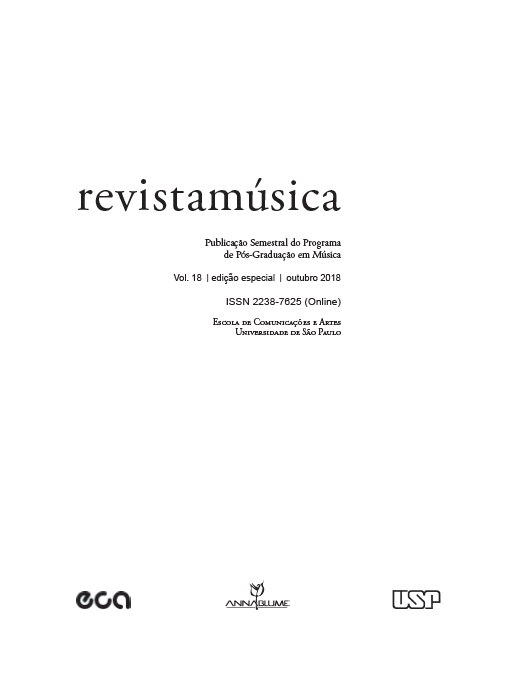Virgil’s Eneid secular motets
the Dactil hexameter on 16th-century “Dulces exuviae” settings
DOI:
https://doi.org/10.11606/rm.v18iespecial.151027Keywords:
Secular motet, Dactil hexameter, Dulces exuviae, Isaac, CeltisAbstract
The secular Latin motet, developed from everyday themes in the 15th-century, assumed a humanistic bias from the 16th-century on-wards, disseminated mainly by Conrad Celtis in northern Europe, based on lyrical works of Greek and Roman authors, arranged ac-cording to metric standards that do not fit the conventional metrics of polyphony. Composers such as Senfl and Hofhaimer represent the apogee of this writing, which especially contemplated Horace’s Epodes; other texts, such as Virgil’s Aeneid verses, would also be arranged in the typical models of the sacred motet, but probably under the influence of Isaac’s metrical arrangements at the end of the 15th-century; one of these texts, “Dulces exuviae”, under goes no less than eighteen arrangements throughout the 16th-century. Analysis of these arrangements points to a greater commitment to the Dactil hexameter when the texture tends to homophony.
Downloads
Downloads
Published
Issue
Section
License
Copyright (c) 2018 Fernando Cardoso

This work is licensed under a Creative Commons Attribution-NonCommercial-ShareAlike 4.0 International License.
Autores que publicam nesta revista concordam com os seguintes termos:
- Autores mantém os direitos autorais e concedem à revista o direito de primeira publicação, com o trabalho simultaneamente licenciado sob a CC Attribution-NonCommercial-ShareAlike 4.0 que permite o compartilhamento do trabalho com reconhecimento da autoria e publicação inicial nesta revista.
- Autores têm autorização para assumir contratos adicionais separadamente, para distribuição não-exclusiva da versão do trabalho publicada nesta revista (ex.: publicar em repositório institucional ou como capítulo de livro), com reconhecimento de autoria e publicação inicial nesta revista.
- Autores têm permissão e são estimulados a publicar e distribuir seu trabalho online (ex.: em repositórios institucionais ou na sua página pessoal) a qualquer ponto antes ou durante o processo editorial, já que isso pode gerar alterações produtivas, bem como aumentar o impacto e a citação do trabalho publicado (Veja O Efeito do Acesso Livre).


